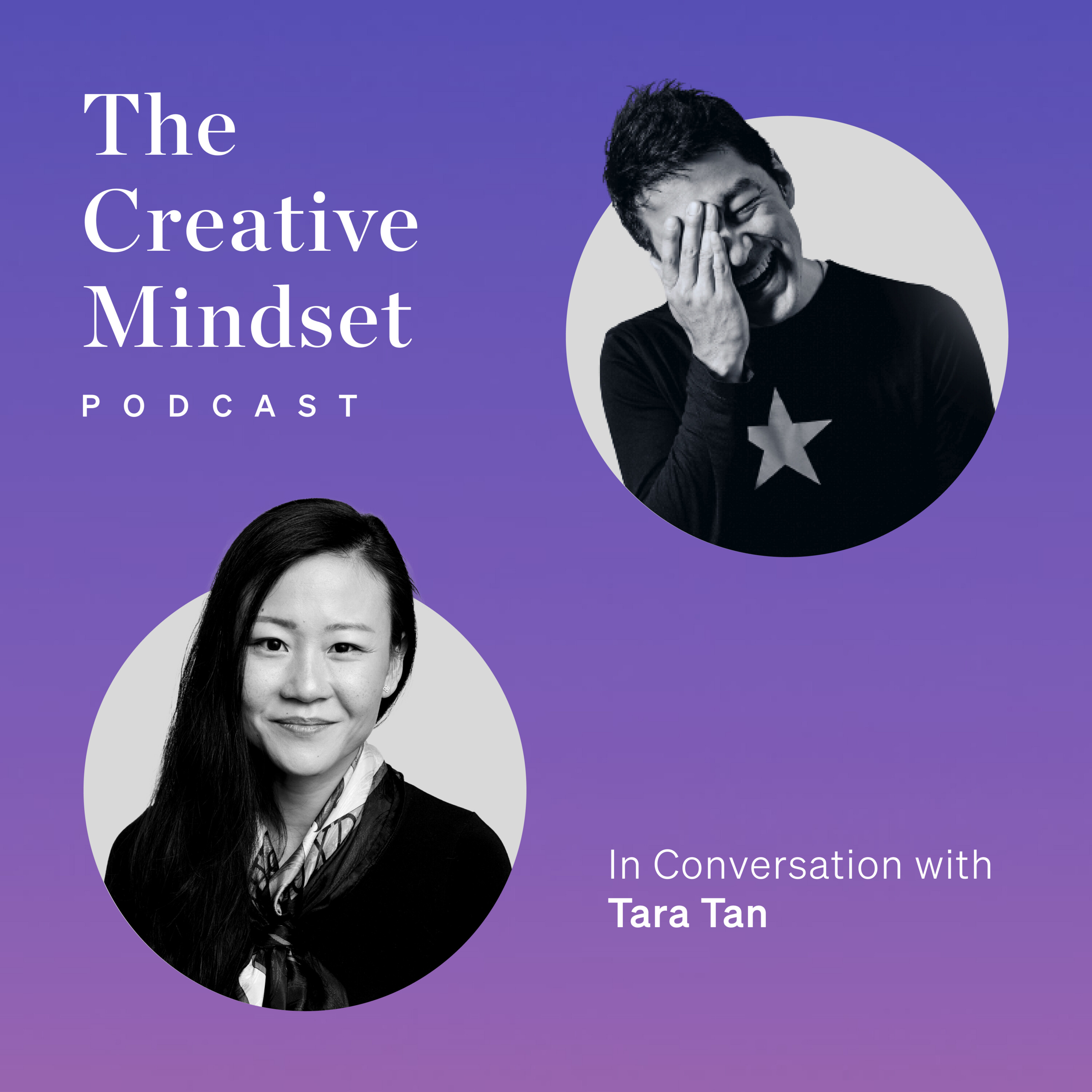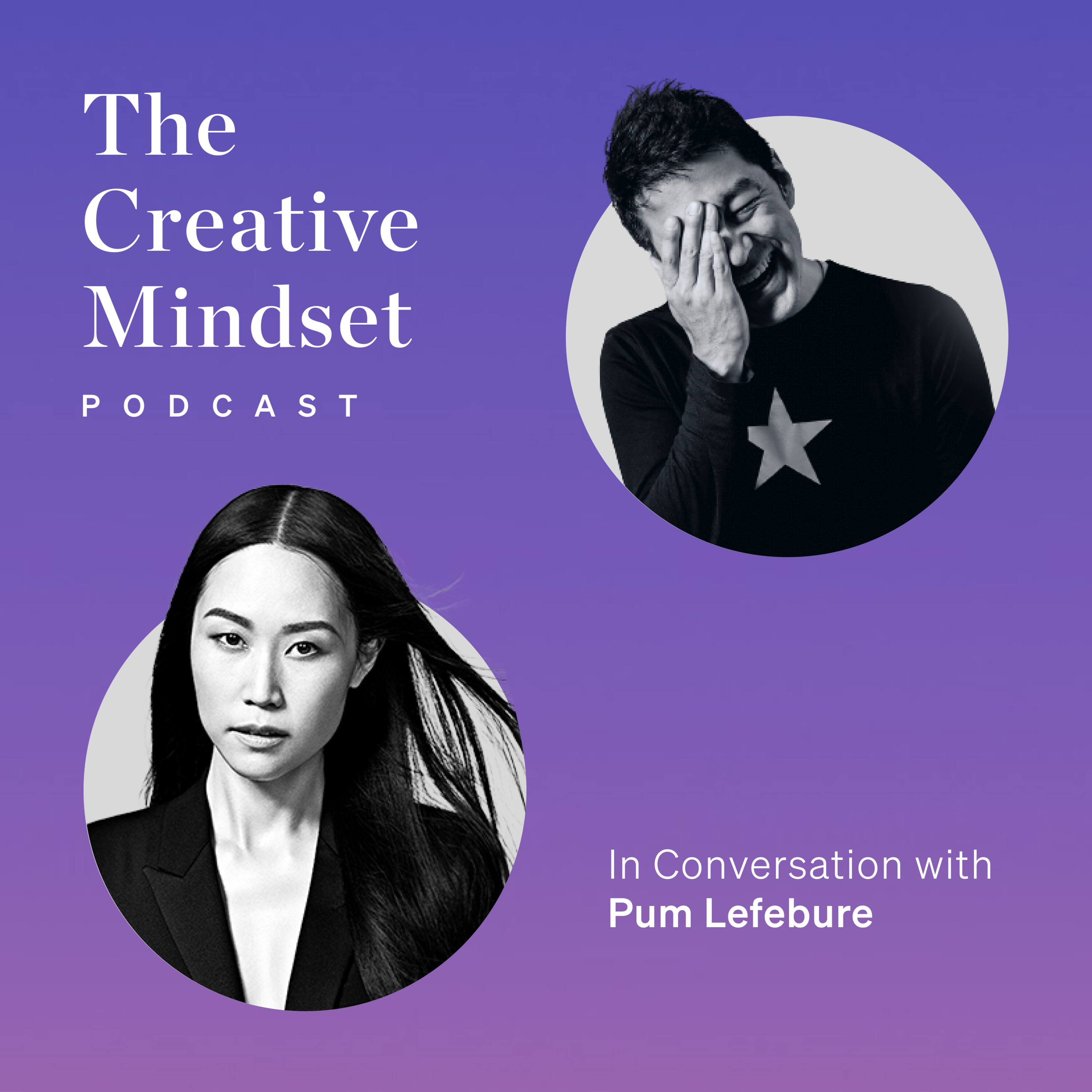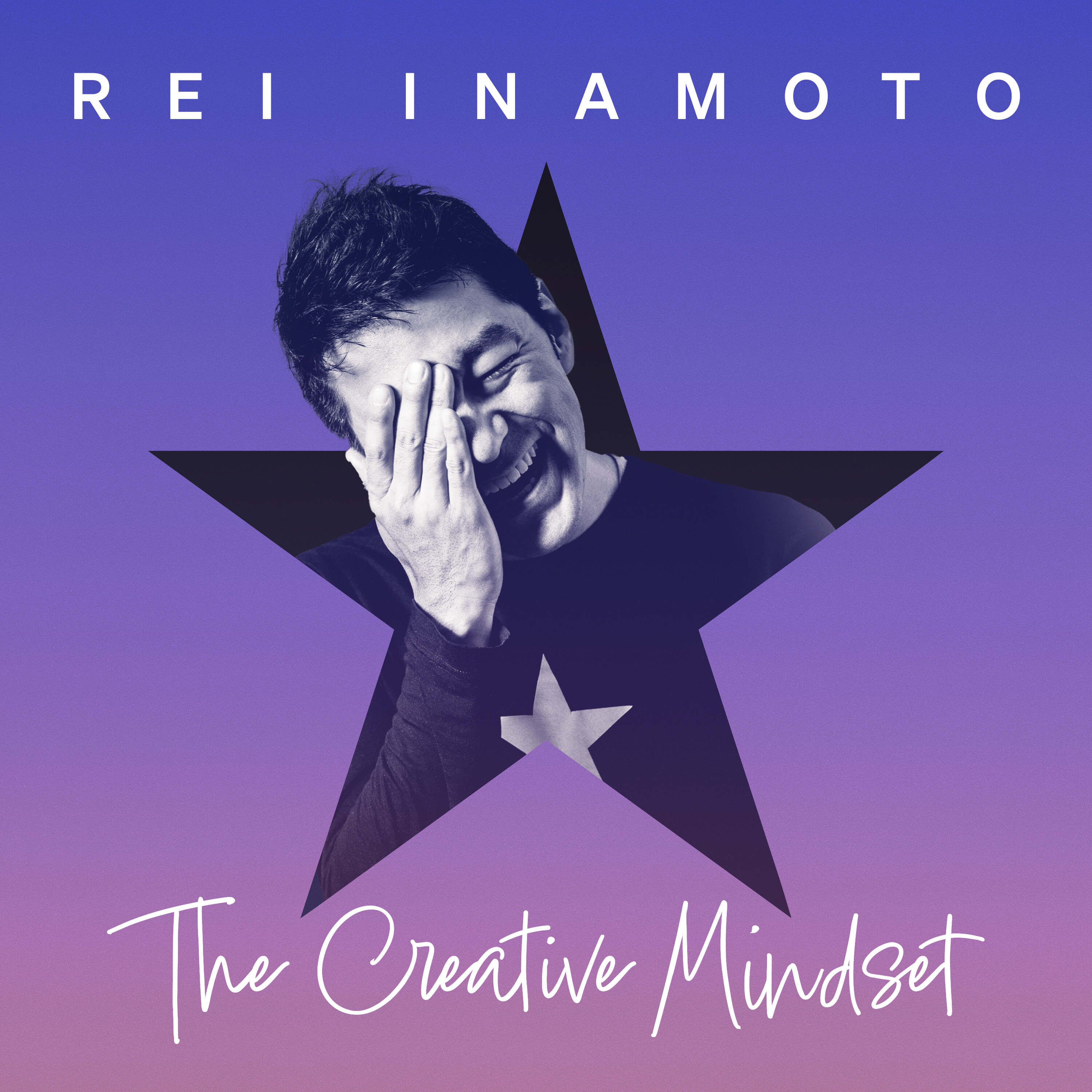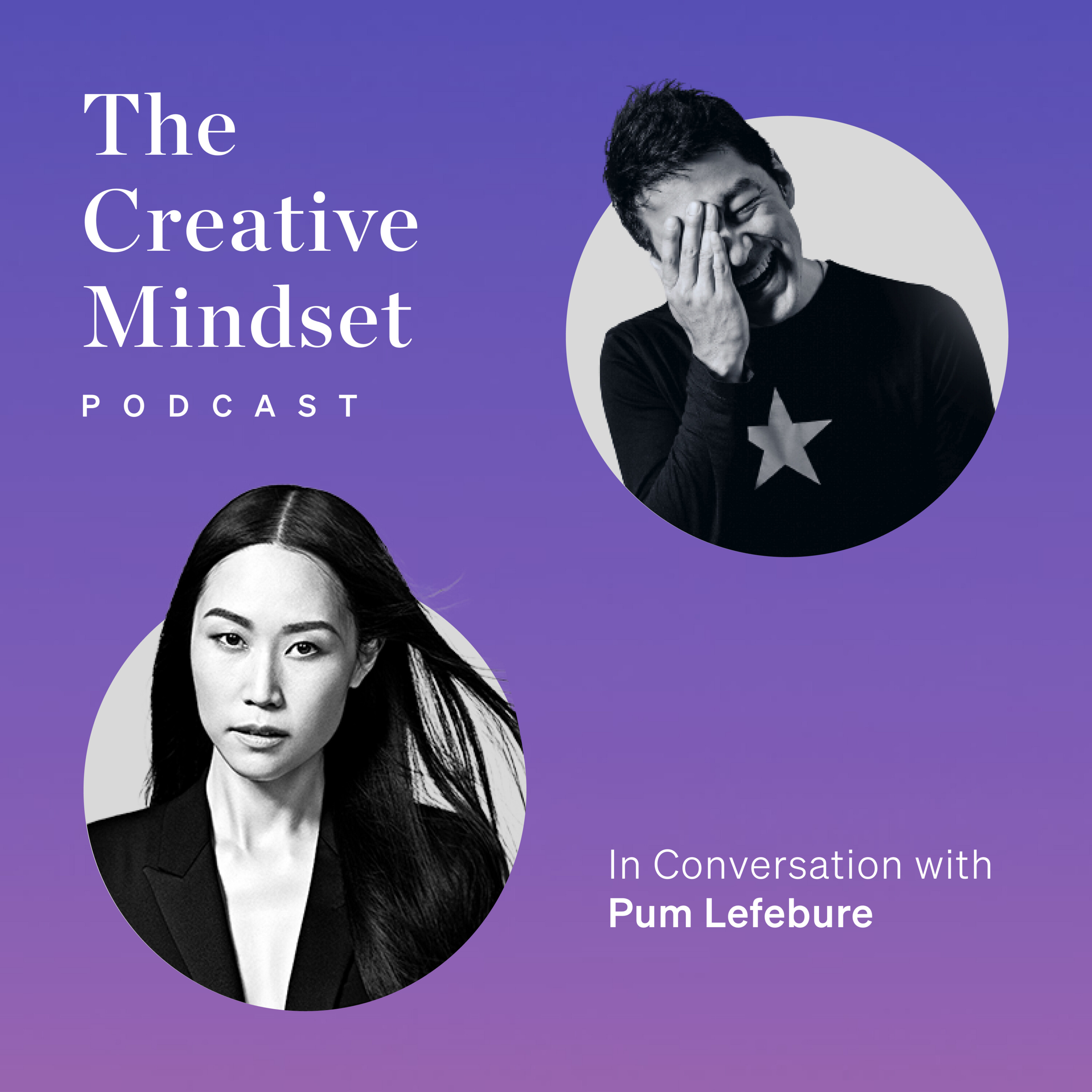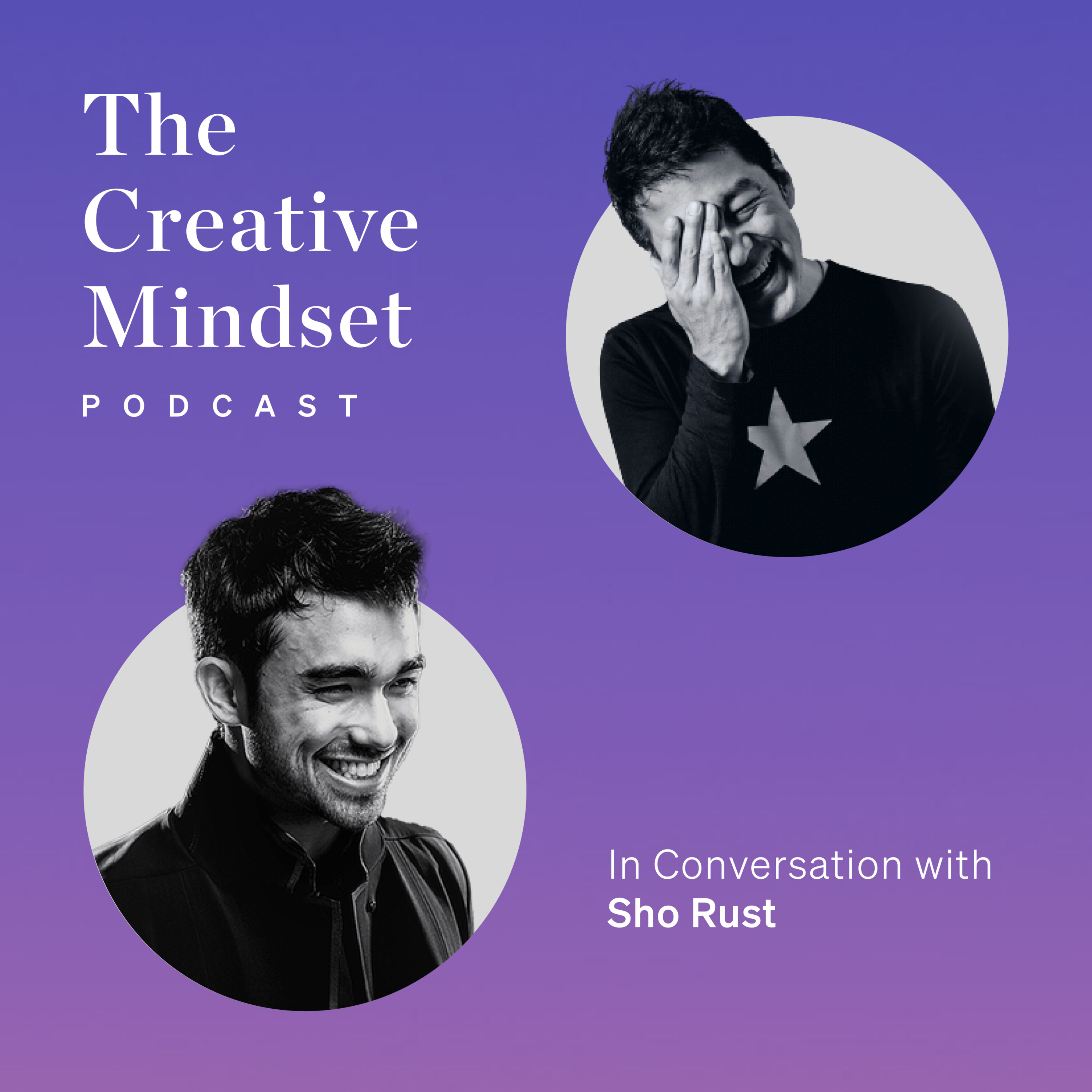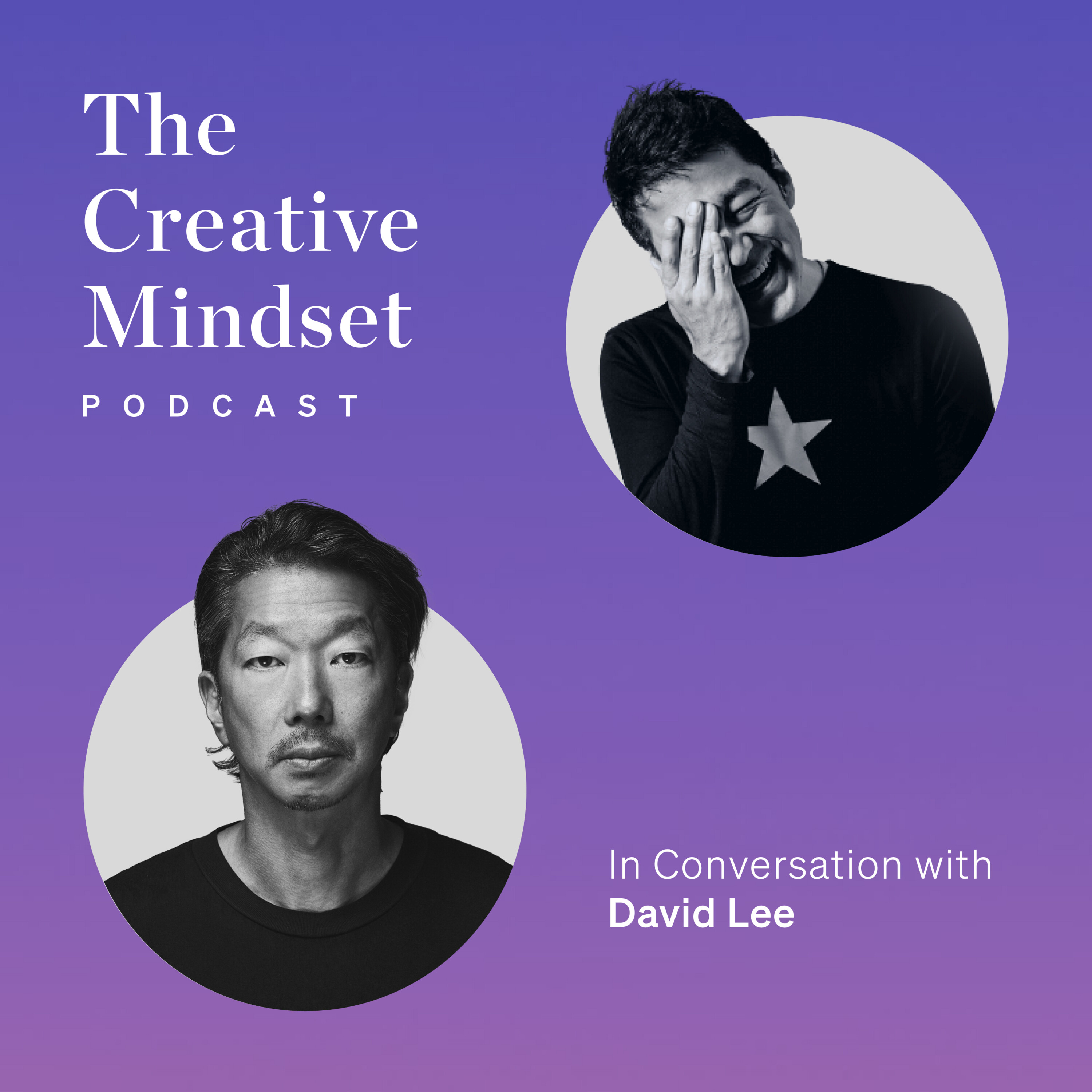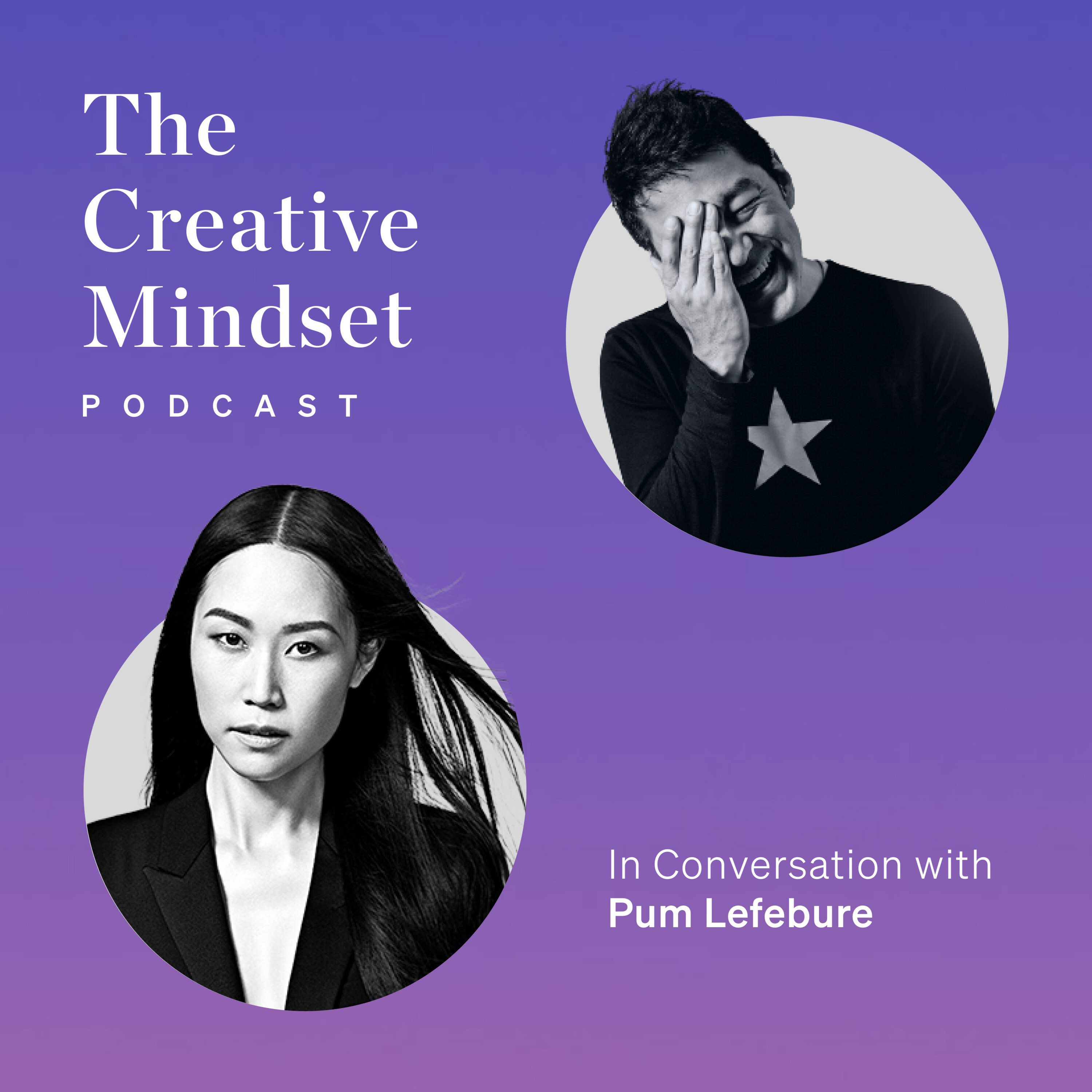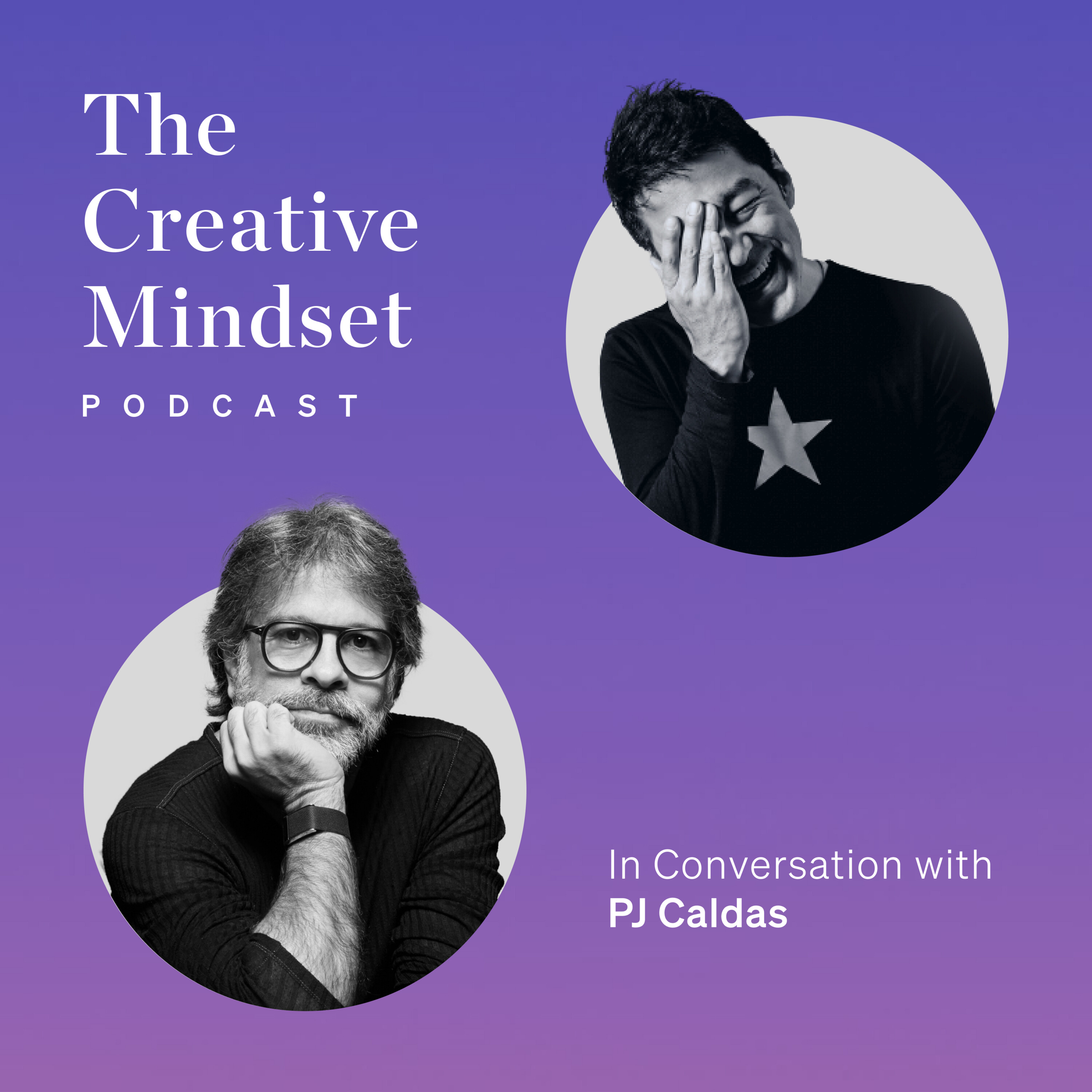This is Reinamoto's podcast, The Creative Mindset.
Hi everyone, welcome to The Creative Mindset, a podcast about what the future holds at the
intersection of creativity and technology. I am Reinamoto, the founding partner of I&CO,
a global innovation firm based in New York and Tokyo.
One of the ongoing themes and challenges I've seen in the creative and technology
industries is the tension between what I would call creatives versus capitalists.
Creatives, if a given business were up to us, would spend as much time and money as we would
want when making things. On the other hand, capitalists would want to make things as
cheaply and as efficiently as possible. Of course, this is a generalization,
but we've seen in Hollywood and writer's strike in the recent past, writers, i.e. creatives,
have been demanding better pay, better working conditions, and protections of their jobs against
AI while executives are trying to get away with lesser pay and using AI to generate content.
Today's guest, Tara Tan, is a creative turned capitalist. She runs her own venture capital
firm, Strange Ventures, out of San Francisco, which she founded in 2022. Strange Ventures
invests in game-changing ideas before anyone else by focusing on AI infrastructure and evolution of
human creativity. Before that, she honed her investing chops at the global design and strategy
firm, IDO, where she achieved a top-quartile track record investing in companies like
River Financial, Neo Protocol, Whirls, and Stability AI. Prior to investing, Tara led
design at a deep tech manufacturing startup and founded an interactive media company
that created the world's first location-based game in 2012. She graduated from Harvard Business
School with a master's degree in design studies. My conversation with Tara had a different beat
in that I wanted to know more and more about the venture capital world, so you'll hear me
asking her quite a few times, can you give me specific examples? It was really fascinating.
So let's get started.
Tara, good to see you.
Good to see you. Great to see you.
Where do we find you?
Right now, I'm in the San Francisco Bay Area. I've been living here since, I want to say, 2015.
Yeah, so I have to say, we don't know each other too well, to be honest. You were kind
enough to randomly reach out to me, I think on LinkedIn, if I remember correctly, and not too
long ago. Yeah, a few months ago.
You know, it might have been this podcast or something related to this podcast.
Yeah.
It was a creative mindset. I think it maybe was shared by someone in my network,
and it might have been about creativity and business. I can't remember which episode it was,
but it struck me. And then I started digging in into the host, which was you, and
just immediately gravitated to the world that you were in, which was the mixture of creativity
and business and entrepreneurship that drew me in. And that's why I reached out.
Wow, that's a nice ego boost.
Thank you. Thank you. Well, it makes it worth it to be doing this podcast.
But again, just to get right into it, like I said earlier, I was really interested in the fact that
you started your career as a designer, as a creative, and then you eventually went into
running a venture team at IDO, which is a very well-established design company, obviously.
And then in 2022, you started your own venture capital firm. So tell us about your transition.
Why did you go from making things into investing into things?
I almost broke up with art, as you can see. Because art was so all-consuming for me.
When you're an artist in that creative mindset, it's all-consuming. That's all you are.
But I kind of wanted to leverage other tools to create more impact.
I was frustrated a little bit, and I think that was a very conscious decision.
When was that specifically? I'm curious. Was there a moment?
It was at Harvard. It was a very painful, actually a two-year-long process.
Yeah, it was a moment. I was like, I'm going to break up with you.
Oh, really?
I know. It was a two-year-long process. I probably sound really insane, but it was
a very emotional decision for me. Because in some ways, I felt like I was meant to do it
in some ways, that sort of creative process and creative life. But I also knew that
I wanted to do a lot more. And so, yeah, it was a very conscious decision.
Were there external forces that you were feeling, external pressures or forces that were on you?
I think it was a very self-motivated desire to have more impact. And maybe thinking back,
I probably could have as much impact if I stayed in art. But I think I was a little
frustrated sometimes, because I felt like I was speaking to the same audience,
and the messages and the things that I advocated for, that I believed in,
I felt wasn't getting through to the world. And so that's why I couldn't make that decision.
I found the fact that you started your career in design, and now you are a venture capitalist,
and you run your own firm. So tell us a little bit about yourself.
I started off as a creative, as a designer. I've worn many hats in the first chapter of my career.
I was a journalist at a newspaper. I'm dating myself, but this was actually a print newspaper.
In Singapore, right?
In Singapore, yes. So I was a reporter for about two years,
hard-hitting chatter. I was pure journalism, got my beats, got my stories, learned to ask
really tough questions and get answers really quickly. And that forms what I do today.
I was an artist and creative. I did large-scale installation projects using technology,
and that's where I fell into the effect and impact of technology on culture, society,
the world, human civilization. And that sort of obsession has followed me over the last 15 years
till today. So long story short, I joined IDEO in 2015 to lead their venture studio.
This was a new initiative within IDEO, which IDEO is a global design and strategy firm where
we started digging into the frontiers of emergent technology.
So in 2015, we were working with Web3, blockchain, and AI, exploring these use cases with a lot of
our clients and corporate clients and startup founders. And we were building alongside
these founders. So for example, the very first NFT standard was actually written at the IDEO
offices. We were drafting it with the engineers who came through. Yeah, we were right there. We
had no idea what was going to blow up. Six months later, everyone was talking about NFTs. And we
were like, what? This was a nerdy project in a room with a couple of designers and engineers,
helped ship the second Dapp on Ethereum, really wrangling with the complex tech problems that
we had and trying to make it usable through design. But it was in that where my love for
venture really began. And I think that there's such an advantage in being a designer and having
a creative background because the speed at which you learn. So one thing they don't say
is that venture capital, most investors learn on hindsight. So that means they write a check,
they invest in startups, and they often learn months or even years after the investment is
written. You get feedback on how the company is doing, their next round, so on and so forth.
When you're building alongside the founders as a designer and creative and an investor,
you get real-time insights and feedback from how the company is doing,
investable opportunities, areas not to invest in, missing parts of the stack.
And I think that really led to the success of the funds that we ran at IDEO because we really had
this studio plus fund model that was very highly complimentary. It gave us a lot of credibility
with the founders. It informed our investments decisions. It gave us insights that we couldn't
get just from the public market because it was so early. And I think that just gave us
an advantage. And our fund is still performing really well even right now in the bear market.
I am building the fund from ground up. And I would say some days it feels harder than doing
a startup and building one, but we're really building a firm that would hopefully outlast
even me. I want to build a generational firm. And I think the reason why I started Strange,
and I'll go back a little bit to my creative background, is that I feel like design is so
underleveraged in venture. Some of the biggest breakthroughs that we've seen in startups
just have great design. Google wasn't the first. It wasn't actually even the best at search when
it started, but they streamlined the UX into a simple search bar. And that's how they got through.
And then we can kind of go back to IDEO's storied history. They were helping Apple design its first
consumer Apple mouse. Some of the founders, Will Morbridge designed the first laptop,
which was, funnily enough, inspired by the design of the traveling businessman's briefcase. And
that's why you have that clamshell design where you open up the briefcase and you open up your
laptop and you slip it into your laptop. That was where the inspiration came from. And from that,
we started digging into the world of user experience and beyond. And really, that's
the roots of IDEO and sort of where design comes in. So design and technology and business have
always had a very tangled and intimate relationship, I would say, especially in the Valley.
And this is sort of the spirit that we bring through in Strange as we enter the next era
of AI and AI infrastructure. And I can share a little bit more about why
design is so crucial to this next frontier of technology.
For some of the listeners who might not be too familiar with the venture capital
world, how do you explain what a venture capitalist does?
It sounds like it's such an easy job to a lot of people. I talk to a lot of young
students and they're like, I want to be a VC. It sounds like fun. And I'm like, yes, it's fun.
On one hand, it's one of the greatest jobs in the world. You get to meet incredible founders,
learn what they're doing, you get a peek into the future, and you get to back them and support them
with capital, creative capital, and more. So that's the best part of the jobs.
The hardest part of the job is, I mean, venture capital is quite a specific sort of
financial tool where we invest basically money into early stage startups in the hopes that
they would grow and return money to our LPs or our investors. And that's what venture capital is.
Where are you drawing the money from?
Yeah, so great question. So we raise from, it's a pretty broad capital pool,
and different VCs have capital sources from different places. Sometimes it could come
from what they call fund of funds, which are big funds that invest in small funds. And they
pull together capital from high net worth individuals or family offices or foundations
or endowments. So it's pretty broad. So I would say fund of funds, family offices are a great
source of capital, high net worth individuals, and sometimes even other investors who pull money
into the fund. What's the size of the funds that you're running?
We're running one fund, I think we're targeting about 25, 25 million.
Okay, yeah. So the money comes from those individuals and institutions that you just
mentioned. I think there's a view that capitalists, not everybody, and you probably won't fit into
this description, but certain capitalists might not value creativity as much as say you and I do.
Yeah. And even, so for instance, just to take the writer's strike as an example,
that's an expression of the tension right now between creatives and capitalists, right?
So what do they need to do to get along? And that's one example, but there's always,
I think there's always this tension. Capitalists are trying to make things more efficient and
produce more and to put it bluntly, make more money. On the other hand, creatives and creativity
require time and sometimes inefficiency is the thing that can lead to creativity and more creative
output and more unexpected output. So there's that inherent tension between capitalists and
those who seek efficiency, right? And then creatives are to some extent the opposite.
What do you think about that? I think the tension is there because
there's always going to be tension on kind of keeping it streamlined or focused. And in some
ways, and this is going to be a little controversial, in some ways, it is a little
helpful to have a little bit of that pressure because it keeps sort of, if you can kind of see
through some of the pressure is related to what the consumers or the market wants sometimes,
right? So sometimes I think that the job of the creators is to kind of cut through the noise and
the pressure and figure out is there any sort of nugget of truth there where it's like they're
trying to point you towards what they're seeing, there's need or there's sort of economic value,
but economic value is tied to sort of consumer wants, right? So I think there's sort of a little
bit of a reframing there that creators kind of need to happen. I mean, with the right to strike,
I think that's just a lot of pure greed that's going on. And I think that there's a lot of
selfishness that's going on. So I'm not advocating for that at all. And I think that, you know,
there's a really great saying where it's not you get what you deserve is you get what you negotiate.
So I think creators have to get better at negotiating, right? And I think I'm excited to
see more capitalists like me, because I think creators need to be part of that table, right?
We need to be at the table. We need to be at the cap table. We need to be negotiating and
demanding for more economic value to be returned to creativity.
Have you invested in design founders?
Yes. Maybe two out of four right now are design founders.
Oh, so 50%?
Right now, yes. But, you know, we'll head to about 30, but I think for, yeah, for the
Strange Portfolio, I would say, you know, some of them probably lean in between creatives and
technology, but they're, you know, they see themselves as designers too.
What advice do you have to both, you know, technical founders and creative slash design
founders who might not have the chops of, you know, managing numbers, managing the capital?
What advice do you have to them?
I would say to see capital as a tool. And that was the biggest learning for me
as I transitioned into this world was that I started seeing capital almost like a tool,
you know, it was like a design tool for me. How can you leverage capital to
create more change, to create more impact, you know, to even build a vision or of the
world that you wanted to see. And in terms of numbers, it's not hard. I think creative
people are extremely technical, you know, and when you look in Excel sheet, it's basically
code sometimes when you're looking at like formulas and numbers, it's very, very similar,
right? And there's certain concepts that you kind of have to learn and grasp, but they're not,
I would say myself personally, not more complicated than learning how to code or
in a designer's example, using pretty complex technology, like honestly, like Photoshop or
Illustrator or Rhino or, you know, Grasshopper. Any of these tools or Blender, you know, I could
go on, but those tools are not easy to use. Those tools are not easy to use. And, you know,
I think business is very much the craft of telling stories or storytelling with numbers.
So instead of storytelling with pixels or words, you're using it numbers, that's all.
Right, right. You mentioned about your own learning about the way you put it was,
you know, seeing capital as a tool. Can you share with us your own learning experience where
you learned that lesson? I mean, I'm kind of self-taught everything, you know, I,
you know, learn how to code, especially when I was at Harvard. And then at the same time, you know,
went to a lot of business classes at the Harvard Business School. And that was fascinating for me
because I started seeing sort of those worlds and languages kind of built in. And I, you know,
kind of learn all the financial models and terms like this kind of cash flow and, you know,
annual returns, and you start looking at accounting. And all I can say is that, you know,
just don't be intimidated by the numbers. And business is very much about storytelling as
designers. So, you know, I think there's definitely a lot of sort of relevance there.
And designers and creatives are incredible storytellers, incredible storytellers, right?
Yeah. So you just have to pick what you tell that story with, whether it's pixels,
You got it.
code or numbers.
Exactly. That's it.
Yeah. Excellent. Excellent. So what advice do you have to
more traditionally defined creatives and designers and even artists who might be
great in that creative, you know, making of the creative expression,
but might not have the technical chops? What do you tell them?
I mean, I would say partner with someone who can code. But, you know, I think the design skills
are very translatable. I think design does two things very well that makes them very suitable
to building companies, right? Design discovers and design distills. So by discover, I mean that,
you know, in the sort of the divergent creative process, you know, you come up with ideas,
it's very generative, and you're able to keep an open mind and have possibilities.
You know, that's an insanely valuable skill, when you're looking at building companies,
because whether you're a huge enterprise that needs to innovate to stay ahead of its time,
or you're a young startup, you know, trying to tweak the product or build a product that fits
the customer need, you need to be iterative, you need to be creative, and you need to be open
minded. You know, and that's a very unique trait that design brings to the table. And the second
one, which I think is less talked about is design distills. So if you, you know, talk about Dito
Rams, it's all about distilling design to its core essence. And I think that lends itself very well
to building companies. Brian Chesky, CEO of Airbnb, who has a creative background,
had a great talk at Figma recently, you saw that, where he talked about the moment of crisis,
they had to redesign the company, right? And they had to figure out what does it mean to
build a company from scratch. But I think that ability, and I use this a ton with my
technical founders, is with everything that you're trying to build this big vision, can we
distill it into what are you actually making and why is it useful for the world? And that distillation
process is extremely important. I love that articulation, design discovers and design
distills. I don't think it makes total sense. And I wholeheartedly agree and sympathize with that
articulation. And this is actually the first time that I've heard it that way. So
thanks for articulating so beautifully. Yeah.
What's your general view on the threat of AI on human creativity?
So my contrarian view is that human creativity will be at a premium in the next five to 10 years.
And I think there's so much fear right now about AI is going to take away our jobs,
is going to make creatives, absolutely not. What I think we don't talk about enough is that
these artificial intelligence models, and this is where strange loops come in, is that they are
trained on content and creation and creativity. And at some point, if we wiped out human creativity
or original content, if we wipe that out, then what does it have to train on? We start running into
worse and worse models, more mediocre models. We kind of get into the suburbia of content where
everything starts to look like the same. So I think that when it becomes easier and easier for
anyone to just churn out or generate just things and objects and artifacts, I think we need
bigger ideas and more original ideas in order to stand out.
Yeah. I think that to your point, the reason you said it was human creativity would be premium.
I would invest in fine art, very tangible human creativity. The expression of that is fine art,
pure art, things like paintings and things like that, things that are being made by human hands.
But I guess putting my business and commercial hat, fine art is great in many ways. And maybe
commercially viable as well. Yeah, absolutely. However, it's highly dependent on the individual
talent. And it doesn't necessarily scale. And there's a lot of storytelling in art in general.
So what differentiates painter A versus painter B, they might be technically skilled the same,
but one might be a better storyteller than the other. Therefore, their art, the value increases.
That's the world of art. But in the world of commercial art, let's say film is one area.
Design is another area, one could say. And in those areas where AI could replace the tasks
that were being done by human beings prior, like say, I'm just going to use a very plain example,
like designing pages, for instance, that's potentially a task that machines can take over.
Then what should a human do to make themselves relevant? Fine art is an artifact in time.
And that's what gives it this value. It's reflection of human civilization at that moment
in time. And that's why we find, whether it's a Monet interesting or a Pollock interesting,
because it was a reflection of the human consciousness at the time, whether it was
the rebellion of 70s and beyond, or a breaking out, Dadaism, whatever. It was a response to the times.
But in commercial art, I think the way to think about it, the way I would encourage
creatives to think about it is to reframe it. AI will enable creativity to scale,
like software. That means that if you're a designer and say you create a, whatever,
a character for an animation, maybe let's say a kid's animation, whatever, it can now be easily
scaled across mediums. You can now, say, turn it into different formats. You can turn it into a
game. You can license out that IP to a game maker really easily and start earning royalties through
it. It can scale across languages really easily. So being able to translate across languages using
voice AI or text-to-speech synthesis really easily. So it really enables us to scale like software.
That's not to say that there won't be a transition period. I think we're in for a little bit of a
And you can charge for it. You can charge a retainer model.
Yeah. Another analogy or another interpretation that what you said reminded me was
editor versus a writer. Before, creatives were the writers and they were making things.
And there were creative directors and other curators who were picking, oh, let's go with
this. Let's not go with that. Let's tweak this and then put it to the world. But what you just said
about system versus model is that a human being will be the ones to be tweaking and fine-tuning
for the final output to be better. But inevitably, the future that we might be heading into is we
need less people than we used to before because we needed creative editors and then creatives
to do the whole thing. Now, we're kind of saying we need less creatives and maybe slightly more
creative editors and tuners and curators, but not as many. So do you think we're seeing the world
where we'll end up with less creatives in a traditional sense?
No, because I think there's going to be more opportunity. I think there was a great article.
I want to share the statistics where it was like AI is going to replace 70 million jobs,
but create 90 million more jobs, more opportunities. So that should net out more.
So yes, I do agree that we're going to need less bodies to create something,
but there's going to be just more opportunity around.
I see. I see. I see.
Yes. So we may not need 500 people to move an elephant. We may need just 10 if you had sort
of a trailer, for example, but then you can move more elephants. It's a bad example,
but you kind of get what I mean. But I'm going to dig out the statistic for you because I think
it'll be super helpful. The number of jobs created will be actually in that way more.
Another topic, one of the questions that I had around AI versus human creativity,
a lot of the tools and a lot of the companies that are creating AI tools for human creativity,
for creativity, I think there's a lot of efficiency talk. And a lot of it is about
operations. So you talked about AI will enable creativity to scale like software, which I see
the point. But I think that scaling comes from the operational aspect of creativity, like language,
instead of just producing in one language, with the AI, you can produce that in 17 different
languages all of a sudden. So that's an operational thing. But it's not necessarily
making the original creative work better, is my sense. What do you think?
Yeah, well, I'm going to bounce the question back to you. Have you used AI in a creative process?
Yes, in terms of brainstorming. Yes, in terms of showing a proof of concept.
But very carefully when it comes to the final execution.
Using AI as a tool, and as a tool, as a brainstorming tool, at least you start
from something and you can kind of disregard it, disrupt it, kick it around, or build on it. But
it sort of is that creative sort of partner you can start kind of going with. And for me, that's
part of the creative process. I've heard brainstorms using AI, like a pure AI workshop.
And that was interesting because it got the participants at a sort of, it just caught them
up in terms of knowledge very quickly. And so they were able to start being creative with ideas
because they had the context. So for me, I think AI gives a lot of contextual intelligence
to the creative process. So part of the research part of creativity, I think it's shortened.
And yes, that's efficient, but it also just gives you more room and more sort of meat to create on.
I mean, Strange itself was a, the name was a product of a creative brainstorm with GPT-4.
Was it?
And it was. And it was such an interesting process. And I was sitting at the SF MoMA,
which is an art museum in San Francisco. And I was looking at this artwork. I can't remember what it
was, but it was beautiful clouds in the sky, you're lying on a beanbag. And I was looking for
a name. And in venture, all names are taken. And I started thinking about AI and art and creativity.
And I started, sort of was thinking about like historical concepts in a technical concept and
trying to find something that resonated. And it was such a great sort of, it felt like I was playing
squash or tennis. I kind of lobbed a couple of ideas. It would send me back. I was like,
eh, not interesting. Or can you tell me more about that? And it was all about the research,
right? So it gave me some historical context around artificial intelligence.
We started going into the concept of strange loops, which in AI is sort of the dilemma of
human consciousness. So when an AI model is conscious of itself, that's creates a strange
loop. And then I realized that strange loop is also present in math and music and in art. If
you know Escher with the staircase, the never ending strange loop, right? And that's where
strange sort of came from. But it was fascinating because I think if I did that with a person,
we may not have had that sort of repository of knowledge to kind of keep going back and forth.
Wow. So just to play back, you were sitting at the MoMA, at SF MoMA, and you were thinking about
what name to your venture. Yeah. And you were just typing ideas into ChatGPT. Is that right?
I was just asking questions. I was asking questions. I was like, can you give me,
you know, like seven pivotal historical concepts in machine learning and artificial intelligence
or human consciousness or the concepts of human intelligence and machine intelligence?
Wow. It knew I was looking for something related to creativity and artificial intelligence. It knew
that. It had that context to it. And then it gave you strange loop as a concept.
I mean, it gave me a lot of strange loops and that was how it started. And then I started doing
like, what is a strange loop? And then I started digging into the history of it, the technical
concept. It's a very technical concept. And then I found that it had a relation to art. And then
that was when it was like, oh, this is magic. And then I started thinking about strange. And I was
like, it's such a bold name. And it turns out that it's maybe a little too bold for venture
capitalists. It's a little too strange for me. And no one had, you know, no one took it. And so,
I kind of leaned in and just kind of, you know, took the brand because I was like,
it just felt like it was perfect. And just a little bit, you know, sort of just a little bit strange.
But it was great. And it sort of fits into early stage venture and the whole business of
big ideas, right? That always seem a little strange at the start.
So, yeah.
Yeah, yeah. That's a beautiful story. That's a beautiful story. And such a fitting
story for this conversation about AI and creativity.
Oh, thank you.
That was part one of my conversation with Tara Tan,
a designer turned capitalist and the founder of Strange Ventures.
What was unexpected was that she made that decision while she was attending Harvard Business
School. She entered Harvard as a way to pursue her design career further. She's got a master's
degree in design studies. So, she didn't go to Harvard thinking that she would become an investor,
but that's the shift that she made during her graduate studies. And the way she expressed
that pivot was really unexpected and somewhat unusual. She used the word
breakup. She broke up with design when she was at Harvard. And I don't think I've heard anybody
talk about a job or career in that way. And that made me realize that design was really her first
love. So, Tara, in a way, is a fellow designer, at least from her background. She's now on the
other side of the table, me as a creative and her as a capitalist or creative turned, a designer
turned capitalist. We look at the same thing from different angles, but I really, really felt
the close affinity to the way she thinks about and the way she talks about design.
So, the three key takeaways from this part of my conversation with Tara are as follows.
Key takeaway number one, design discovers, design distills. Number two, design is storytelling
with pixels. Business is storytelling with numbers. Key takeaway number three, AI will
enable creativity to scale like software. Point number one, design discovers and design distills.
This view of design in a way is not new, but I think this was the first time that I heard somebody
articulate design this way. Design discovers and design distills. The repetition of D
is really, really clever and makes the phrase memorable. I don't think I need to explain the
meaning behind from this phrase, because especially if you are listening to this podcast
and if you happen to know a thing or two about design or if you are a design practitioner,
you know inherently that this is what we do when we look at an assignment, when we look at a
problem, when we are thinking about what it is that we should be making. The first step is to
look for what it is that we're trying to solve. What is the question that we are asking
and what's the real problem? There may be a given problem either from the client or from a
business person, from a capitalist to solve, but behind that ask is what is really the
question that we're trying to ask and what's the real problem that we're trying to solve, particularly
for the end user. So design discovers. Once you discover the right problem that you should be
solving, before you make that solution into a tangible thing, you really have to distill
the problem into a certain hypothesis and from the hypothesis you have to create a solution by
distilling to the core essence of the question that you're trying to address. So design discovers,
design distills. I thought it was such an elegant way of articulating what design is.
Key takeaway number two, design is storytelling with pixels, business is storytelling with numbers.
Again, this view is not necessarily completely new, yet I don't think I've heard it articulated
so elegantly and so eloquently. When she says pixels, she doesn't necessarily mean pixels on
screen all the time, but these days, majority of design that we do, whether it's digital product
design, graphic design, interior design, industrial design, or even architectural design,
the vast majority of the work that we do happens on screen and you are looking at the expression
of your ideas as pixels, as you are forming those ideas into a tangible thing. But behind it,
there's an intention that you're trying to make either visible or usable to the end user.
I really appreciate the way she used the word storytelling in the context of this particular
point, design is storytelling with pixel, business is storytelling with numbers. And especially those
of us who run a company, looking at numbers, looking at spreadsheets, before when I was a pure
creative, when I could focus purely on the making aspect of the business, I had the fortunate and
perhaps immature position of not having to look at spreadsheets and making ends meet to make sure
that the business was running and the business was healthy in order to sustain and grow
the company. But now I'm in the seat of running a company, I don't necessarily consider myself a
capitalist, but I do know that I have to play with capitalists. And numbers do paint a picture.
And by painting a picture, it's trying to tell a certain story. And when I say paint a
picture, I don't mean just to cover up the dirty secrets of your business, but using
numbers as a way to tell stories. Also, in this context, design is storytelling with pixels,
business is storytelling with numbers. I couldn't agree with her more.
Takeaway number three, AI will enable creativity to scale like software.
This is, I think, a rather new concept, especially with the rise of generative AI.
Until about a year, year and a half ago, when we couldn't really
use ChatGPT, MidJourney and other AI tools that we are now increasingly and very rapidly becoming
familiar with, the advantage of tools like MidJourney, ChatGPT and other tools is that
it's not just about increasing productivity of what you do, but also increasing the scale
of the work that you produce. And if not used correctly, I think it does have the danger of
doing real damage, as we've seen with social media. But at the same time, social media has
brought a lot of scenarios that weren't possible 10 years ago, 15 years ago, a reality. I think
that there's a very high possibility with the help of AI, design can scale in ways that we cannot
imagine today. So to summarize, key takeaway number one, design discovers, design distills.
Number two, design is storytelling with pixels, business is storytelling with numbers.
Number three, AI will enable creativity to scale like software.
